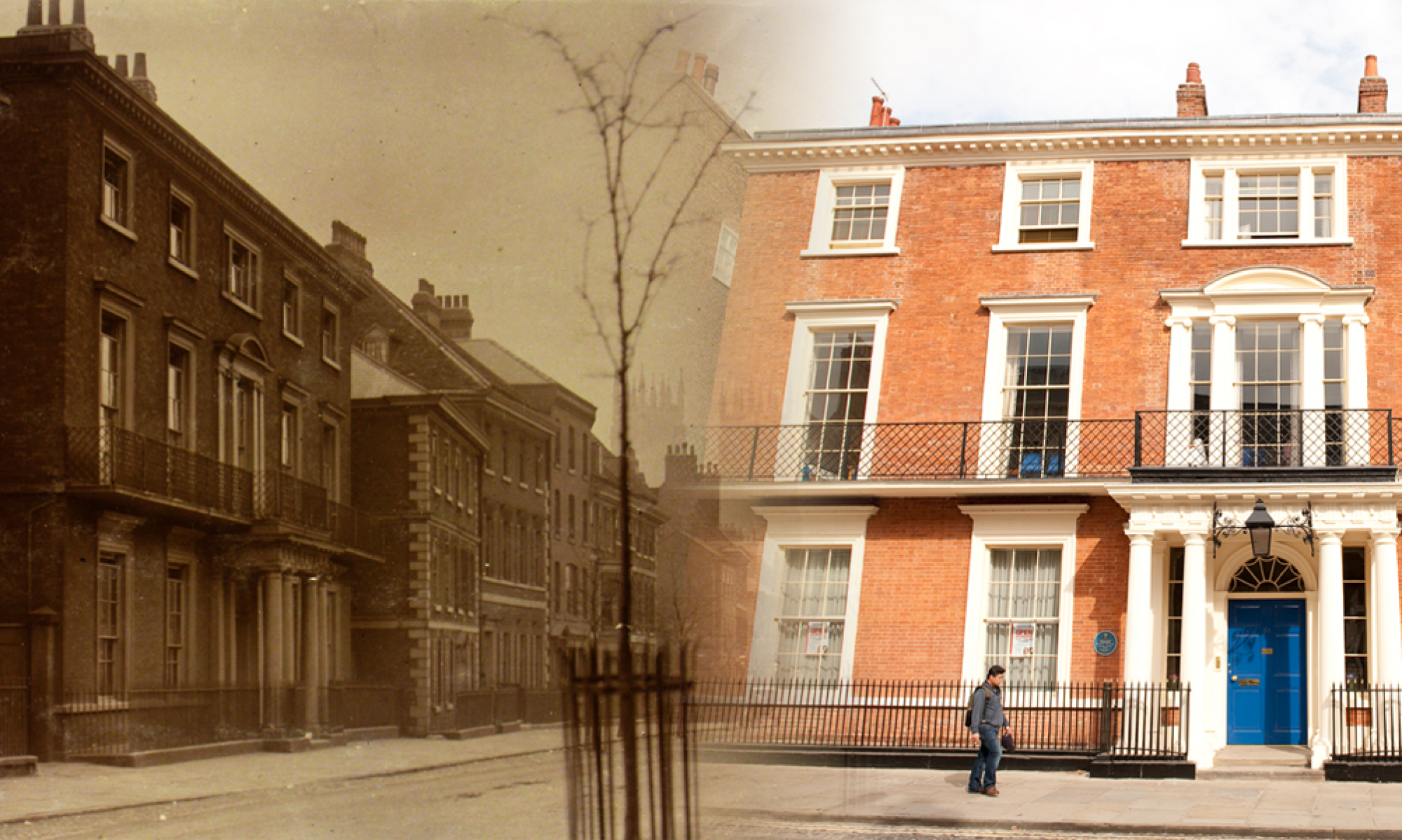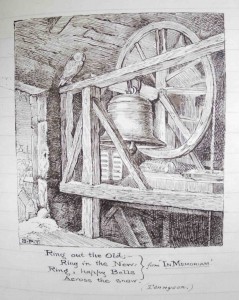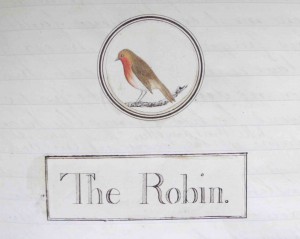Term has finished, with all the Christmas events the end of term brings, this year’s ‘Bootham’ magazine has just been posted, and the school is quiet. From my office I can hear the Minster clock chime. So it seems appropriate to end this Christmas series with a drawing of ‘The Christmas Bells’ from the ‘Extra Christmas Number’ of The Observer from 1873.
The editor finishes his introduction to the issue by “wishing Contributors, Artists, Poets and Readers
A Merry Christmas and a Happy New Year
20 Bootham, December 11th 1873”
140 years later, I would like to send the same wishes to everyone reading this.
- The Observer, Vol XII, p735. The image is signed SPT, almost certainly Silvanus Philips Thompson, who was a pupil at Bootham School between 1858 and 1867, and taught at the school between 1870 and 1875. He went on to become a well known physicist and there is a blue plaque with his name on Bootham.
- 20 Bootham was later renumbered as 51 Bootham.


